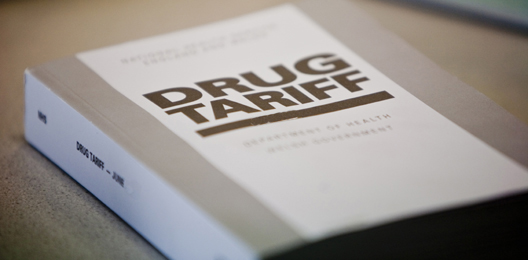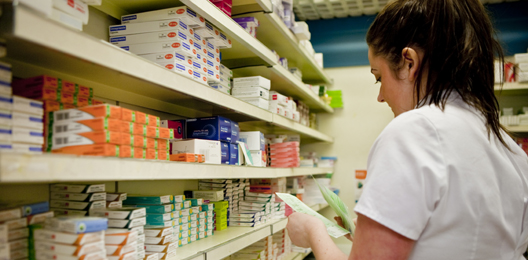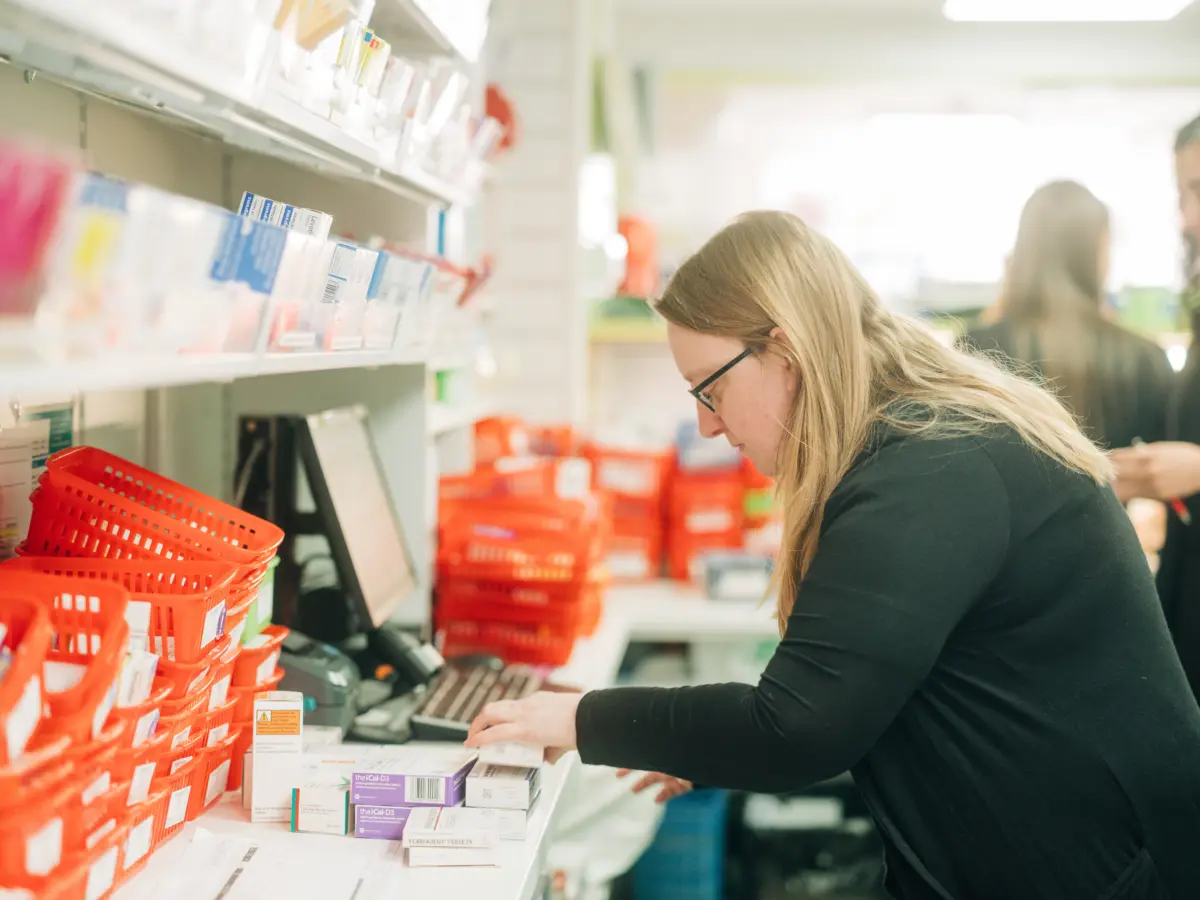Appliances
Published on: 17th July 2013 | Updated on: 7th September 2022
QUICK LINKS |
| REF: Drug Tariff Part IX |
| Dispensing Appliances (Service specification) |
| Drug Tariff Appliance Watch: Notice of Deletion |
Products registered as medical devices are also known as appliances and must be listed in the Drug Tariff to be allowed to be dispensed by NHS community pharmacies.
Click on a heading below to reveal more information.
How to determine if an appliance is allowed on prescription
Appliances can only be prescribed on NHS prescriptions if the product is listed in Part IX (the appliances section) of the Drug Tariff. Prescribed appliances must be an exact match for the listing in the Drug Tariff; for example the specific type and pack size must correspond with a Drug Tariff listed product. When checking whether an appliance is allowed on an NHS prescription, it is worth knowing the Drug Tariff can be viewed online. If the appliance has been ordered by code number or brand name, use the search functionality on the online Drug Tariff to quickly locate the product.
 If you receive a prescription for a new product or an unusual item and are unsure whether it is classed as an appliance, you can check the packaging to see whether the product bears a ‘CE’ mark (indicating that it is an appliance, see picture opposite). If you are in any doubt, you can contact the Community Pharmacy England Dispensing and Supply Team (0203 1220 810 or info@cpe.org.uk) who will be able to find this out for you.
If you receive a prescription for a new product or an unusual item and are unsure whether it is classed as an appliance, you can check the packaging to see whether the product bears a ‘CE’ mark (indicating that it is an appliance, see picture opposite). If you are in any doubt, you can contact the Community Pharmacy England Dispensing and Supply Team (0203 1220 810 or info@cpe.org.uk) who will be able to find this out for you.
Key points to consider
Some appliances have ‘restricted availability’ (e.g. vacuum pumps and constrictor rings for erectile dysfunction), this will be indicated beside the listing for the relevant appliance. With a similar process to medicines on the selected list, these appliances may only be ordered on an NHS prescription for the patient groups and for the purpose described in the Drug Tariff. The prescriber must also endorse the prescription ‘SLS’. If the ‘SLS’ endorsement is missing, the prescription should not be dispensed and will not be passed for payment by the Pricing Authority. Pharmacy staff cannot make the SLS endorsement.
Appliances can appear in the Drug Tariff with a ‘dual listing’. When the name of a Drug Tariff listed appliance changes, prescribers are given time to change their prescribing habits from using the old name to the new one. This period of grace, where both the old and new name of a product will be passed for payment by the Pricing Authority, usually lasts for 12 months. When the dual listing is removed, only prescriptions using the new name, as it appears in the Drug Tariff, will be reimbursed.
All Catheters listed in Part IXA of the Drug Tariff are considered to be ‘sealed packets‘ (Drug Tariff Part IX, Note 2). Products recognised as ‘sealed packets’ are treated in exactly the same way as special containers. When less than a complete pack of catheters is requested, the Pricing Authority will base payment on the nearest complete pack or combination of packs. If the quantity ordered falls exactly halfway between two complete packs, contractors should round down and will be reimbursed accordingly.
Although appliances can only be prescribed on an NHS prescription if the product is listed in Part IX of the Drug Tariff, there is an exception that allows some, ‘drugs packed with non-Drug Tariff appliances’ to be prescribed where the appliance is used to administer the drug, for example metered aerosols packed with refills, nicotine inhalation cartridges packed with the device etc.
For an appliance prescribed generically and only listed generically in the Drug Tariff, the only endorsement required is the pack size where multiple pack sizes of the product are available. In the case of elastic hosiery and trusses, a description of the generic product must be provided.
For an appliance prescribed generically but listed by brand or manufacturer’s name in the Drug Tariff, endorse the brand or manufacturer’s name as listed in the Drug Tariff. The pack size need only be endorsed where there are multiple pack sizes of the product listed.
For an appliance prescribed by brand or manufacturer’s name, the only endorsement required is pack size where there are multiple pack sizes of the product listed.
How reimbursement prices are set
Appliance manufacturers are required to apply to the Pricing Authority to request that a particular appliance is added to Part IX of the Drug Tariff. In deciding whether to list a product, consideration is given to whether the product is safe and of good quality, whether it is appropriate for prescribing on the NHS and whether it is cost effective. The price of the product is set following negotiations between the manufacturer and the Pricing Authority.
Once a product has been listed, there is an agreed mechanism for the Drug Tariff reimbursement price to change. For products listed by brand or manufacturer’s name, the manufacturer may seek an optional price rise once a year, this is capped at the forecast of the gross domestic product (GDP) deflator minus 0.75 percent. Manufacturers can apply for decreases to the reimbursement price for their products at any time. Where a manufacturer asks to withdraw their appliance from Part IX, for example because it has been discontinued, three months’ notice of deletion is provided in the Drug Tariff. For products listed generically the reimbursement price automatically increases every June by the forecast of the GDP deflator minus 0.75 percent.
Provision for home delivery and disposable bags and wipes
There is a requirement to make available home delivery for all appliances in Part IXB and IXC of the Drug Tariff plus certain qualifying items in Part IXA*, namely:
- catheters (urinary and urethral)
- catheter accessories
- catheter maintenance solutions
- anal irrigation systems
- laryngectomy and tracheostomy items
- vacuum pumps and constrictor rings for erectile dysfunction
- wound drainage pouches
It is the patient’s choice whether they collect their appliance from the pharmacy or have it home delivered. Where home deliveries are made, they should be undertaken with reasonable promptness, at a time agreed with the patient. The packaging used should not have any markings which could indicate the contents and the method of delivery must not convey the type of appliance being delivered.
A reasonable supply of wipes and disposal bags should be supplied with the appliances where necessary.
*Entries in the Drug Tariff indicate whether the supply of wipes and disposable bags, or home delivery applies to the products listed. These items automatically attract a fee, whether or not the patient wishes to have the items delivered. For more information on how much those fees are, see our fees and allowances page.
Out of pocket expenses and Broken Bulk
Out of pocket expenses and broken bulk cannot be claimed for items in Part IXA and IXR of the Drug Tariff, but both can be claimed for items listed in Part IXB and IXC.
 |
 |
|
Part IXB Part IXC |
Part IXA Part IXR |
There are no specific requirements for sorting appliance prescriptions separately (unless they also meet one of the other criteria for including in the red separator).
Please report any issues relating to the pricing or supply of Drug Tariff appliances using our “Problems obtaining an appliance?” form.
FAQs
As pharmacy contractors will not be reimbursed for out of pocket expenses incurred when items in Part IXA of the Drug Tariff are dispensed, manufacturers must ensure that their products are available to pharmacy teams either through the normal wholesale network as a standard line or on equivalent terms without extra charges. Where a Part IXA appliance is not available from wholesalers without additional charges, we recommend contacting the manufacturer directly to find out how you can obtain the product without extra charges. If a product appears to be unavailable without additional charges from either the manufacturer or the wholesale network, please report this to the Community Pharmacy England Dispensing and Supply Team using our online form, we will investigate the issue and then escalate to the Pricing Authority as necessary
Missing pack size for an appliance:
- Contact prescriber to clarify which of the Drug Tariff pack sizes should be dispensed, then add size required and endorse “PC” (initial and date). Reimbursement will be based on the contractor’s endorsement.
- If the prescriber cannot be contacted, where appropriate, a professional judgement as to the size needed* (endorsing size given) could be made, or alternatively the prescription could be returned to the prescriber.
- If there is no endorsement, the contractor will be reimbursed based on the smallest pack size of the product listed in the Drug Tariff.
No type specified for an appliance:
- If only one type is listed in the Drug Tariff, dispense it and endorse what was given.
- If more than one type listed in the Drug Tariff, contact the prescriber to find out the required type and endorse “PC” (initial and date). Reimbursement will be based on the endorsement.
- If more than one type is listed and the prescriber cannot be contacted, a professional judgement as to the appropriate type* (endorsing type given) could be made, or alternatively the prescription could be returned to the prescriber.
* Please note: best practice guidance is to find out what size/type of appliance is required from the prescriber if at all possible.
Ideally prescriptions for appliances should be issued using the Drug Tariff description for the product. If an item listed in Part IX of the Drug Tariff by generic name with no brands listed is prescribed by a brand name, it can be dispensed; however contractors should clearly endorse the generic description on the prescription to ensure that the product can be identified by prescription pricing staff.
The generic defaults in place for catheters can be found in Part IXA of the Drug Tariff at the beginning of the “Catheters, Urinary, Urethral” section. In order to be reimbursed by the Pricing Authority for a catheter priced higher than the relevant default price, the pharmacy would need to return the prescription to the prescriber for amendment. The prescription must be amended to include a specific brand name as listed in Part IX of the Drug Tariff. Pharmacy staff cannot make this amendment themselves.
Appliances which have generic default prices are: catheters, elasticated tubular bandages, absorbent perforated plastic film faced dressings, permeable non-woven synthetic adhesive tape BP 1988, and peak flow meters. All default prices can be found in Part IX of the Drug Tariff, in the same sections as you would find the reimbursement prices for the branded versions of these products.
As a general rule, all prescriptions for hosiery should indicate the quantity being dispensed; include a description of the article (eg. knit, style) and an indication of the compression class. The Drug Tariff listings are generic and the Pricing Authority does not receive or maintain specific information relating to the Drug Tariff specification brands. To price your prescription, the Pricing Authority processing staff need sufficient information about the product being dispensed. If this is not available, the prescription will be returned to the pharmacy for more information to be added.
For below knee and thigh length standard stock sized garments (where there is no indication that ‘made to measure’ has been supplied) the only knit available is circular knit. The Pricing Authority has confirmed that in this case, if the contractor hasn’t endorsed the knit, ‘circular knit’ will be the default for payment. The style (eg. below knee or thigh length) and the compression class must still be clearly marked on the prescription for the Pricing Authority to make the correct payment. If this is not included on the prescription, the prescription will be returned.
For anklets, kneecaps and made to measure stockings where there is a choice of knit, the type of knit dispensed along with the style (e.g. below knee, thigh length, anklets or kneecap) and the compression class must be clearly marked on the prescription for the Pricing Authority to make the correct payment. If this is not available, the prescription will be returned to the pharmacy for more information to be added.
If the prescriber has requested a standard stock size of elastic hosiery but after measuring the patient, it is identified by the pharmacist that the patient requires a made-to-measure product, as long as the prescription is clearly endorsed to indicate that a made-to-measure product was provided, a contractor will be reimbursed on this basis.
Where measuring and fitting has occurred, pharmacies should also clearly endorse prescriptions with the letters ‘MF’ to claim the measured and fitted additional fee (Part IIIA 2. B (a) of the Drug Tariff).
By way of example the endorsement should be as follows: –
<compression class> <article style> <quantity> <knit>
And if appropriate the words ‘made to measure’ and where the product has been measured and fitted the letters ‘MF’
e.g.
Class2,
Thigh Length,
2 stockings,
Circular Knit
Made to measure
MF
The pharmacy cannot endorse the additional options themselves so the prescription would have to be returned to the prescriber to be amended. Where Jobst Elvarex garments are prescribed including specifically prescribed additional options, to ensure correct reimbursement, the dispenser must ensure that full details including order codes are clearly endorsed on the prescription.
Sodium Chloride Nasal Drops are listed in Part IX of the Drug Tariff so contractors can only provide one of the products listed in this section. The nasal drops that can be dispensed can be found in Part IXA of the Drug Tariff under the heading ‘Nasal Drops – Sodium Chloride 0.9%’
Contractors should endorse the name of the manufacturer (not the supplier) on the prescription. If the prescription is endorsed with the manufacturer of a normal saline nasal drops 0.9% product not listed in the Drug Tariff, a copy of the prescription will be returned to the contractor marked disallowed.
Related resources
Dispensing Factsheet: Is this item allowed
Dispensing Appliances (Service specification)
Drug Tariff Appliance Watch: Notice of Deletion
Prescription Endorsements Factsheet












